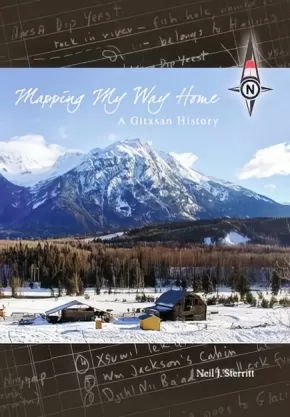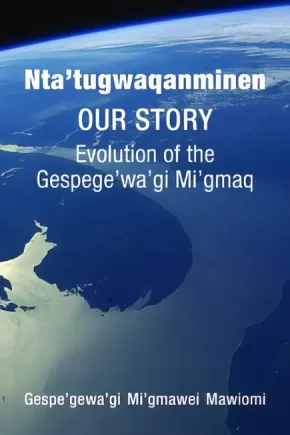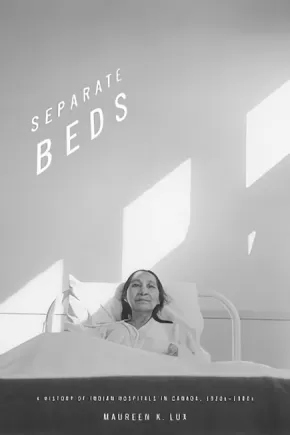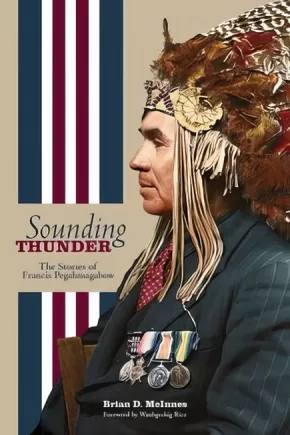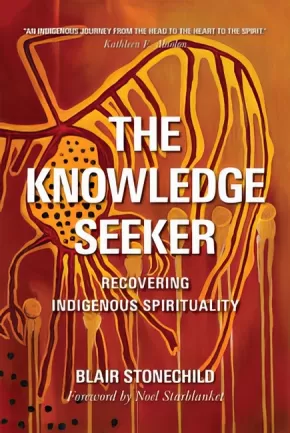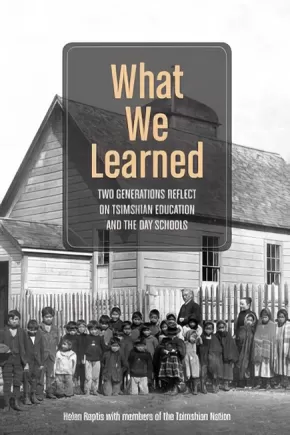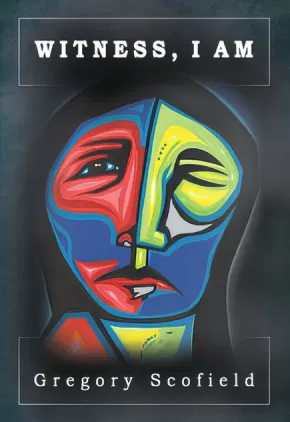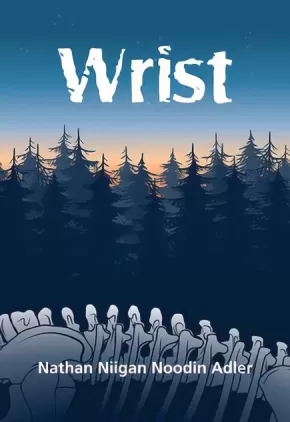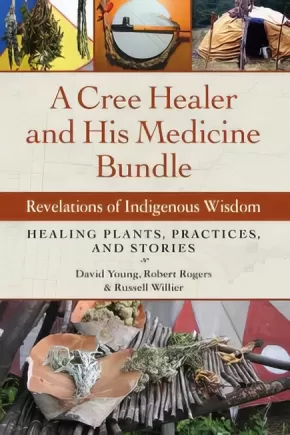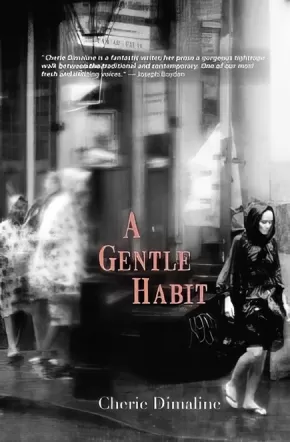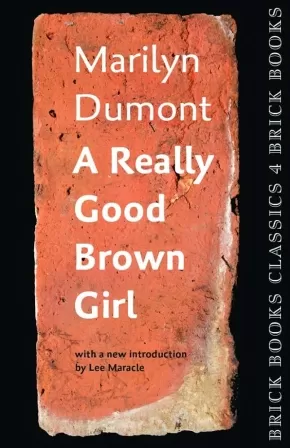Indigenous Peoples in Canada
Synopsis:
Today the adjacent villages of Gitanmaax and Hazelton form one of the most picturesque communities in all of western Canada—a tiny, tourism mecca nestled in Gitxsan territory at the foot of an iconic mountain in the heart of the Skeena watershed. But 150 years ago these neighbouring villages were the economic hub of the north when packers, traders, explorers, miners, surveyors and hundreds of tons of freight passed through from Port Essington on the coast east to the Omineca gold fields, from Quesnel north to Telegraph Creek.
Mapping My Way Home traces the journeys of the European explorers and adventurers who came to take advantage of the opportunities that converged at the junction of the Skeena and Bulkley rivers. The author, Gitsxan leader Neil Sterritt, also shares the stories of his people, stories both ancient and recent, to illustrate their resilience when faced with the challenges the newcomers brought.
And finally he shares his own journey from the wooden sidewalks of 1940s Hazelton to the world of international mining and back again to the Gitxsan ancestral village of Temlaham where he helped his people fight for what had always been theirs in the ground-breaking Delgamuukw court case.
It’s British Columbia history, local history, family history and Gitxsan history. The book also includes a chapter on the history of BC’s land issues and a detailed description of Neil’s involvement in the Delgamuukw court case.
Additional Information
384 pages | 7.00" x 10.00"
Synopsis:
Nta’tugwaqanminen provides evidence that the Mi’gmaq of the Gespe’gewa’gi (Northern New Brunswick and the Gaspé Peninsula) have occupied their territory since time immemorial. They were the sole occupants of it prior to European settlement and occupied it on a continuous basis. This book was written through an alliance between the Mi’gmaq of Northern Gespe’gewa’gi (Gaspé Peninsula), their Elders and a group of eminent researchers in the field with the aim of reclaiming their history, both oral and written, in the context of what is known as knowledge re-appropriation. It also provides non-Aboriginal peoples with a view of how Mi’gmaq history looks when it is written from an Indigenous perspective.
There are two voices in the book — that of the Mi’gmaq of the Gespe’gewa’gi, including the Elders, as they act as narrators of the collective history, and that of the researchers, who studied all possible aspects of this history, including advanced investigation on place names as indicators of migration patterns.
Nta’tugwaqanminen speaks of the Gespe’gewa’gi Mi’gmaq vision, history, relation to the land, past and present occupation of the territory and their place names and what they reveal in terms of ancient territorial occupation. It speaks of the treaties they agreed to with the British Crown, the respect of these treaties on the part of the Mi’gmaq people and the disrespect of them from the various levels of governments. This book speaks about the dispossession the Mi’gmaq of Gespe’gewa’gi had to endure while the European settlers illegally occupied and developed the Gaspé Peninsula to their own advantage and the rights and titles the Mi’gmaq people still have on their lands.
Author Note: The Gespe’gewa’gi Mi’gmawei Mawiomi is the organization that represents the three communities of the northern part of Gespe’gewa’gi. Research associates Richard Jeannotte and Donald Jeannotte, both Gespe’gewa’gi Mi’gmaqs, and Danielle E. Cyr, senior scholar at York University, wrote the seven first chapters. Troy Jerome, current Mi’gmawei Mawiomi Secretariat Executive Director / Nutewistoq wrote Chapter 8.
This book would be useful for courses in social studies, history, and English language arts. Recommended for grades 8-12, as well as college/university courses.
Foreword by Satsun (Herb George)
Introduction: How We Came to Write Nta’tugwaqanminen
Our Territory in Prehistoric Times
Our Place Names
Our Creation Story and Fundamental Myths
Our Historical Presence in Gespe’gewa’gi
The Treaty Relationship Between Mi’gmaq of Gespe’gewa’gi and the British Crown
Good Faith and Dispossession
Our Constitutional Rights as Gespe’gewa’gi Mi’gmaq
The Gespe’gewa’gi Mi’gmaq in Contemporary Times
Conclusion: Our Story Continues
Notes
Bibliography
Index
320 pages | 6.00" x 9.00"
Synopsis:
Reckoning is a triptych of three short plays: Witness is a dance-movement piece featuring a Truth and Reconciliation Commissioner who unravels as he confronts the brutal testimony of residential school survivors; in Daughter, the daughter of a teacher who was accused of rape seduces her father's accuser; and Survivor is a solo piece about a man preparing to commit suicide as a protest against the insufficiencies of the reconciliation process.
Agonizing, poignant, theatrical, hilarious, and true, Reckoning illuminates the difficulties of trying to come to terms with our country's painful past.
Educator Information
Recommended for grade 11 and 12 students for courses in performance arts, language arts, and English. Also useful for college and university courses in these areas.
Caution: explicit language and discussion of sexual and physical abuse.
Additional Information
66 pages | 5.00" x 8.00"
Synopsis:
Separate Beds is the shocking story of Canada’s system of segregated health care. Operated by the same bureaucracy that was expanding health care opportunities for most Canadians, the “Indian Hospitals” were underfunded, understaffed, overcrowded, and rife with coercion and medical experimentation. Established to keep the Aboriginal tuberculosis population isolated, they became a means of ensuring that other Canadians need not share access to modern hospitals with Aboriginal patients.
Tracing the history of the system from its fragmentary origins to its gradual collapse, Maureen K. Lux describes the arbitrary and contradictory policies that governed the “Indian Hospitals,” the experiences of patients and staff, and the vital grassroots activism that pressed the federal government to acknowledge its treaty obligations.
A disturbing look at the dark side of the liberal welfare state, Separate Beds reveals a history of racism and negligence in health care for Canada’s First Nations that should never be forgotten.
Awards
- 2017 Aboriginal History Book Prize awarded by the Canadian Historical Association winner
- 2017 Jason A. Hannah Medal awarded by The Royal Society of Canada winn
Reviews
"In painstaking research and matter-of-fact reportage, Associate Professor Lux of Brock University documents Canadian apartheid. Separate Beds: A History of Indian Hospitals In Canada is a riveting and extraordinary account of mistreatment of citizens." — Tom Korski, Blacklocks Reporter, Saturday, June 4, 2016
‘Lux’s detailed account will surely be of interest to scholars of Aboriginal history and health care as well as to the people interested in the development of Indian hospitals in Canada.’ — Joanne DeCosse, Canada’s History October-November 2016
‘This is a must read for anyone interested in the history of Canadian Healthcare, Aboriginal health and treaty rights.’ — Velvet Maud, The Canadian Journal of Native Studies vol 36:02:2016
Additional Information
288 pages | 6.00" x 8.98" | Paperback
Synopsis:
Francis Pegahmagabow (1889–1952), a member of the Ojibwe nation, was born in Shawanaga, Ontario. Enlisting at the onset of the First World War, he became the most decorated Canadian Indigenous soldier for bravery and the most accomplished sniper in North American military history. After the war, Pegahmagabow settled in Wasauksing, Ontario. He served his community as both chief and councillor and belonged to the Brotherhood of Canadian Indians, an early national Indigenous political organization. Francis proudly served a term as Supreme Chief of the National Indian Government, retiring from office in 1950.
Francis Pegahmagabow’s stories describe many parts of his life and are characterized by classic Ojibwe narrative. They reveal aspects of Francis’s Anishinaabe life and worldview. Interceding chapters by Brian McInnes provide valuable cultural, spiritual, linguistic, and historic insights that give a greater context and application for Francis’s words and world. Presented in their original Ojibwe as well as in English translation, the stories also reveal a rich and evocative relationship to the lands and waters of Georgian Bay.
In Sounding Thunder, Brian McInnes provides new perspective on Pegahmagabow and his experience through a unique synthesis of Ojibwe oral history, historical record, and Pegahmagabow family stories.
Awards
- Fred Landon Award, Ontario Historical Society (2018)
- American Book Award, Before Columbus Foundation (2017)
“Debwemigad Nimkiig gaye Aadizookanag zhawenimaawaad. Brian McInnes has clearly been blessed by the Thunders and Great Storytellers. With Sounding Thunder he has achieved the perfect balance of personal memoir and scholarly inquiry. He shares with readers the stories that have connected one generation to another and in these cycles we find the truth about living. Dibaajimowinan omaada’oozhinang mii igo aanikoobijige.” – Margaret Ann Noodin, Assistant Professor, Department of English, University of Wisconsin
“Sounding Thunder is invaluable for those working in biographical, historical, Indigenous, military and political studies and the general reader. McInnes skillfully contextualizes his subject as one of Canada’s greatest war heroes as well as a member of his family, community, and Anishinaabe people.” – Brock Pitawanakwat, Assistant Professor, Department of Indigenous Studies, University of Sudbury
“Brian McInnes’ book is both elegant and masterful in its weaving of language, spirituality, storytelling, family, community, and physical place on the lands and waters of Georgian Bay as he presents the world and life of his great-grandfather, Francis Pegahmagabow. McInnes’ presentation of family stories in both Ojibwe and English, and his placement of them within their historical and geographical context, underlines Waubgeshig Rice’s claim in his foreword to Sounding Thunder that the book will remain ‘a vital resource for generations to come.’” – Jurors, Fred Landon Award, Ontario Historical Society
This book would be useful for social studies and history courses for students in grades 11 and 12 or at a college/university level.
240 pages | 6.00" x 9.00" | 31 b&w illustrations | 5 b&w tables | bibliography
Synopsis:
When Stella, a young Métis mother, looks out her window one evening and spots someone in trouble on the Break — a barren field on an isolated strip of land outside her house — she calls the police to alert them to a possible crime.
In a series of shifting narratives, people who are connected, both directly and indirectly, with the victim — police, family, and friends — tell their personal stories leading up to that fateful night. Lou, a social worker, grapples with the departure of her live-in boyfriend. Cheryl, an artist, mourns the premature death of her sister Rain. Paulina, a single mother, struggles to trust her new partner. Phoenix, a homeless teenager, is released from a youth detention centre. Officer Scott, a Métis policeman, feels caught between two worlds as he patrols the city. Through their various perspectives a larger, more comprehensive story about lives of the residents in Winnipeg’s North End is exposed.
A powerful intergenerational family saga, The Break showcases Vermette’s abundant writing talent and positions her as an exciting new voice in Canadian literature.
Awards
- 2017 Burt Award for First Nations, Inuit, and Métis Literature Winner
- Margaret Laurence Award for Fiction Winner
- McNally Robison Book of the Year Winner
- Amazon.ca First Novel Award
Reviews
“Vermette is a staggering talent. Reading The Break is like a revelation; stunning, heartbreaking and glorious. From her exquisitely rendered characters to her fully realized world and the ratcheting tension, I couldn’t put it down. Absolutely riveting.” — Eden Robinson, author of Monkey Beach
“In Vermette’s poetic prose, The Break offers a stark portrayal of the adversity that plagues First Nations women in this country — and the strength that helps them survive.” — Toronto Star
“The Break doesn’t read like an impressive first novel; it reads like a masterstroke from someone who knows what they’re doing . . . Vermette is skilled at writing with a language that is conversational and comfortable and with a poetic ease that makes the hard things easier to swallow. The result is a book that is at times emotionally demanding, funny, suspenseful, and always engaging.”—The Winnipeg Review
“This is a debut novel by the Governor General's Literary Award-winning Métis poet Katherena Vermette. The story takes place in Winnipeg's North End. And it starts when Stella thinks she sees a violent assault taking place in a barren strip of land outside her window, known as The Break. Turns out, she is right. In fact, there is a threat of violence that hovers over all the women in the story, three generations of them, and the story is told in many voices. Katherena writes with empathy and understanding about people who are living with the pain of intergenerational trauma. The Winnipeg winter she evokes is cold and cruel. But there is such love, loyalty and support in this story. If you enjoy a gripping family saga, I would recommend The Break.” — Shelagh Rogers, CBC The Next Chapter
Educator Information
Grades 11-12 BC English First Peoples resource for the unit What Creates Family?
The Canadian Indigenous Books for School list recommends this resource for Grades 10-12 English Language Arts.
Curriculum Connections: English, Indigenous Studies, Anthropology
Note: This novel contains mature and challenging content, such as incidents of drug use, rape, and, violence.
Additional Information
288 pages | 5.25" x 8.00"
Synopsis:
The Knowledge Seeker tells the story of the developing Indigenous-run education movement and calls forth the urgent need to teach about Indigenous spirituality.
Educator Information
Table of Contents
Foreword
Acknowledgments
Introduction
CHAPTER 1: Wanting to Know
CHAPTER 2: Controlling Our Education
CHAPTER 3: The Great Principle
CHAPTER 4: The Great Law
CHAPTER 5: Once Powerful Healing
CHAPTER 6: Re-evaluating the Past
CHAPTER 7: Contemporary Crisis
CHAPTER 8: Modern Study of Spirit
CHAPTER 9: Restoring Balance
EPILOGUE: "Creator Does Not Lose His Children"
Notes
Glossary
Bibliography
Index
Additional Information
224 pages | 6.00" x 9.00"
Synopsis:
Totem Poles and Railroads succinctly defines the 500-year-old relationship between Indigenous nations and the corporation of Canada. In this, her fifth poetry collection, Janet Rogers' expands on that definition with a playful, culturally powerful and, at times, experimental voice. She pays honour to her poetic characters--real and imagined, historical and present day -- from Sacajawea to Nina Simone. Placing poetry at the centre of our current post-residential school/present-day reconciliation reality, Rogers' poems are expansive and intimate, challenging, thought-provoking and always personal.
Reviews
"To give Rogers’ poems a form, a body, I would have to name them blackbirds, formidable winged creatures who’ve chosen the highest branch and whose eyes allow us the vision we so often cannot see ourselves. I’m honoured to be called into this ceremony, sung awake by her prayers. Praise for Totem Poles and Railroads." —Gregory Scofield, author of Witness, I am
"These new poems by Janet Rogers are a straight shot metaphysical call to action in the wake of historical trauma, police violence, shameful treatment of our body Earth. They stand as urgent witness, clear talk in the face of colonized law built on lies. Rogers reminds us to pay attention, to listen. These words can heal." —Joy Harjo
"Janet Rogers’ latest book Totem Poles and Railroads doesn’t pull any punches. All of the stinging and difficult realities of colonialism are confronted head-on and with ferocity. Rogers is here to disrupt these white landscapes. Rogers is here to call out all of the bullshit both past and present. Totem Poles and Railroads is burning to be read." —Jordan Abel, Nisga’a Nation, author of Injun
Educator Information
This book would be useful for courses in creative writing, English, and language arts for students in grades 11 and 12 and those at a university/college level.
Additional Information
168 pages | 6.00" x 9.00"
Synopsis:
The legacy of residential schools has haunted Canadians, yet little is known about the day and public schools where most Indigenous children were sent to be educated. In What We Learned, two generations of Tsimshian students – elders born in the 1930s and 1940s and middle-aged adults born in the 1950s and 1960s – add their recollections of attending day schools in northwestern British Columbia to contemporary discussions of Indigenous schooling in Canada. Their stories also invite readers to consider traditional Indigenous views of education that conceive of learning as a lifelong experience that takes place across multiple contexts.
Reviews
"Helen Raptis has written an important book about Tsimshian educational history. It is also a book about building research relationships with Indigenous communities. It is a work that recognizes, implicitly, that Indigenous history does not run in a straight line but is more liquid and circular. The journey to understand the Indigenous past requires deft canoe navigation through riptides and crosscurrents, past colonization’s half-submerged debris. Landing on the beach, one discovers no conventional separation between past, present, and future. There are only the stories—the stories and the sacred landscape." — Michael Marker, University of British Columbia, History of Education Quarterly, Vol. 57 No. 1, February 2017
Educator Information
Helen Raptis is an associate professor in the Faculty of Education at the University of Victoria. The members of the Tsimshian Nation are Mildred Roberts, Wally Miller, Sam Lockerby, Verna Inkster, Clifford Bolton, Harvey Wing, Charlotte Guno, Don Roberts Junior, Steve Roberts, Richard Roberts, Carol Sam, and Jim Roberts
Additional Information
224 pages | 6.00" x 9.00" | Paperback
Synopsis:
Witness, I Am is divided into three gripping sections of new poetry from one of Canada's most recognized poets. The first part of the book, "Dangerous Sound," contains contemporary themed poems about identity and belonging, undone and rendered into modern sound poetry. "Muskrat Woman," the middle part of the book, is a breathtaking epic poem that considers the issue of missing and murdered indigenous women through the reimagining and retelling of a sacred Cree creation story. The final section of the book, "Ghost Dance," raids the autobiographical so often found in Scofield's poetry, weaving the personal and universal into a tapestry of sharp poetic luminosity. From "Killer," Scofield eerily slices the dreadful in with the exquisite: "I could, this day of proficient blooms, / take your fingers, / tie them down one by one. This one for the runaway, / this one for the joker, / this one for the sass-talker, / this one for the judge, / this one for the jury. / Oh, I could kill you."
Educator Information
Recommended for students in grades 11 and 12, or at a college/university level, for courses in creative writing, English First Peoples, English, poetry, and English language arts.
Caution: explicit coarse and sexual language.
Additional Information
96 pages | 5.50" x 8.00"
Synopsis:
An Indigenous monster story.
In 1872, dinosaur hunters become embroiled in a battle over the discovery of fossils in Northern Ontario as their excavation crews are driven mad by a bizarre and terrifying illness. Over a hundred years later, Church and his family show signs of the same monstrous affliction. As he begins to unravel his family's dark history, Church must race to protect the secrets buried deep in bones and blood. Set in the fictional town of Sterling and Ghost Lake Reserve, Wrist is Nathan Adler's debut novel.
Reviews
“A forest doesn’t know what the future holds, but it is patient.” I love how Adler solicits the assistance of the natural world in weaving his magical tale - fantastic, captivating from beginning to end. Meet the fantastic world of Adler’s people and follow their journey through Ojibway life and story. Adler peppers the story with the rhythmic sound of Ojibway and it seems to help tell the story in the same way the natural world helps tell the story.” – Lee Maracle, author of Celia’s Song
"Nathan Adler writes exceptionally well. His words weave together and tell a haunting story that leaves you wanting more." -Christine Smith (McFarlane), Freelance Journalist
"With a unique voice and narrative, Nathan Adler blends poetic imagery and Anishinaabe story to create something totally new and completely beautiful." – Cherie Dimaline, author of A Gentle Habit, The Girl Who Grew a Galaxy, and Red Rooms
Additional Information
198 pages | 5.50" x 8.50"
Synopsis:
Charlie James (1867–1937) was a premier carver and painter from the Kwakwaka'wakw First Nation of British Columbia. Also known by his ceremonial name Yakuglas, he was a prolific artist and activist during a period of severe oppression for First Nations people in Canada.
Yakuglas’ Legacy examines the life of Charlie James. During the early part of his career James created works primarily for ritual use within Kwakwaka'wakw society. However, in the 1920s, his art found a broader audience as he produced more miniatures and paintings. Through a balanced reading of the historical period and James’ artistic production, Ronald W. Hawker argues that James’ shift to contemporary art forms allowed the artist to make a critical statement about the vitality of Kwakwaka'wakw culture. Yakuglas’ Legacy, aided by the inclusion of 123 colour illustrations, is at once a beautiful and poignant book about the impact of the Canadian project on Aboriginal people and their artistic response.
Synopsis:
With the rise of urban living and the digital age, many North American healers are recognizing that traditional medicinal knowledge must be recorded before being lost with its elders. A Cree Healer and His Medicine Bundle is a historic document, including nearly 200 color photos and maps, in that it is the first in which a native healer has agreed to open his medicine bundle to share in writing his repertoire of herbal medicines and where they are found. Providing information on and photos of medicinal plants and where to harvest them, anthropologist David E. Young and botanist Robert D. Rogers chronicle the life, beliefs, and healing practices of Medicine Man Russell Willier in his native Alberta, Canada. Despite being criticized for sharing his knowledge, Willier later found support in other healers as they began to realize the danger that much of their traditional practices could die out with them.
With Young and Rogers, Willier offers his practices here for future generations. At once a study and a guide, A Cree Healer and His Medicine Bundle touches on how indigenous healing practices can be used to complement mainstream medicine, improve the treatment of chronic diseases, and lower the cost of healthcare. The authors discuss how mining, agriculture, and forestry are threatening the continued existence of valuable wild medicinal plants and the role of alternative healers in a modern health care system. Sure to be of interest to ethnobotanists, medicine hunters, naturopaths, complementary and alternative health practitioners, ethnologists, anthropologists, and academics, this book will also find an audience with those interested in indigenous cultures and traditions.
Additional Information
240 pages | 6.00" x 8.99"
Synopsis:
A short story collection by Cherie Dimaline.
The inspiration for the collection comes from American Poet Charles Bukowski who wrote "In between the punctuating agonies, life is such a gentle habit." Following this theme of extraordinary ordinariness, A Gentle Habit is a collection of six new short stories focusing on the addictions of a diverse group of characters attempting normalcy in an unnatural world.
Reviews
"Cherie Dimaline is a fantastic writer, her prose a gorgeous tightrope walk between the traditional and contemporary. One of our most fresh and exciting voices." - Joseph Boyden, author of award-winning novel The Orenda.
“Cherie Dimaline has strongly established herself as a gifted, essential voice in the vibrant realm of global Indigenous literature. The compelling journeys she creates for her richly complex characters invoke the profound storytelling of her Anishinaabe heritage. With A Gentle Habit, Dimaline delivers yet another beautiful set of influential stories that take modern Indigenous writing on a bold, exciting path forward.” – Waubgeshig Rice, CBC Journalist and author of Midnight Sweatlodge and Legacy.
Additional Information
250 pages | 6.00" x 9.00"
Synopsis:
Deluxe redesign of the Gerald Lampert Award-winning classic.
This edition of A Really Good Brown Girl features a new Introduction by Lee Maracle, a new Afterword by the author, and a new cover and design by the renowned typographer Robert Bringhurst.
First published in 1996, A Really Good Brown Girl is a fierce, honest and courageous account of what it takes to grow into one's self and one's Métis heritage in the face of myriad institutional and cultural obstacles. It is an indispensable contribution to Canadian literature.
"No other book so exonerates us, elevates us and at the same time indicts Canada in language so eloquent it almost hurts to hear it." --Lee Maracle, from the Introduction
Educator Information
This resource is also available in French: Une vraie bonne petite Métisse.
Additional Information
112 pages | 6.00" x 8.50"

